How to build the perfect Sunday roast, according to Gordon Ker of Blacklock
Their roasts have been voted the best in the nation, to the horror of mothers everywhere. Here's how you can make one at home...
I’m a former lawyer, for my sins. But I always wanted to have my own business and build something where the focus was squarely on our people, and being a great place to work. That, matched with a hankering to bring back the traditional British Chop House, which had kind of fallen away over the years, led me to open Blacklock.
We launched our first restaurant in Soho back in 2015, and have grown from there — opening Blacklock in the City and Shoreditch in the years since. Our latest restaurant opens next week, in fact, in Covent Garden — and we couldn’t be more excited. I always wanted Blacklock to be a place where people can get the best quality at the best value for money, and a place where everyone, team and guests, have a great time.

It took us a while to open for Sunday roast, as we wanted to work out how to do the very best version we possibly could. As Brits, we get all sentimental about our roasts. It’s an opportunity to get around a big table with friends and family and regale each other of the week’s goings-on. Many claim to have the best in the UK, and ours has even been miraculously voted as such — but we know no roast will ever beat the nostalgic feast mums dish out up and down the land each week.
There is just something about being round the table, relaxed, in the comfort of your own home with family and friends. We do our best to get as close to that comforting feast — perfectly content in the knowledge that it’ll only ever be almost as good as mum’s. That being said, we do have a few tried-and-tested tips for cooking your very own perfect roast, should you wish to take up the challenge.
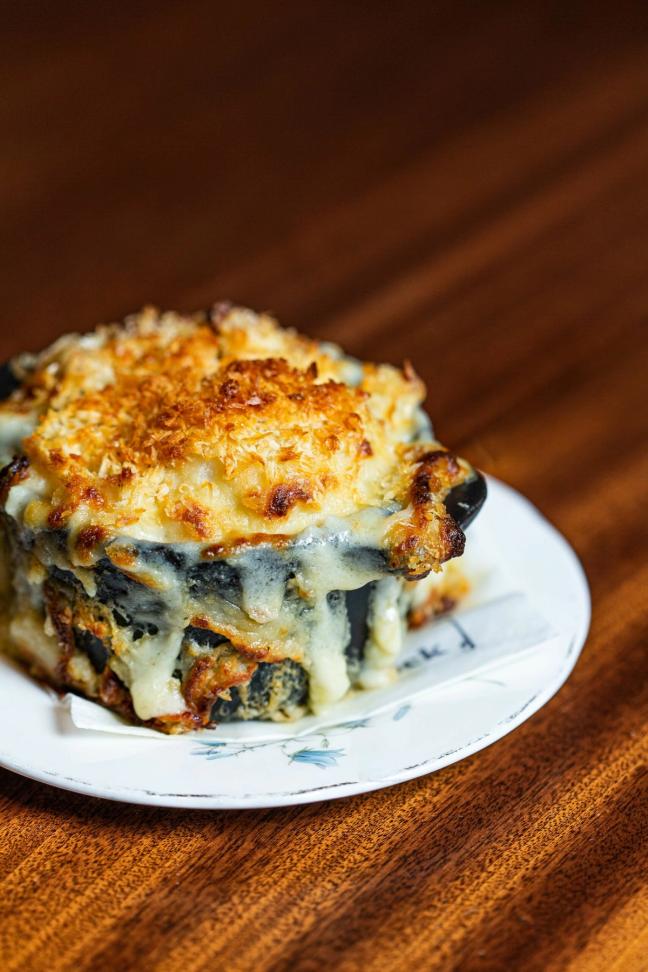
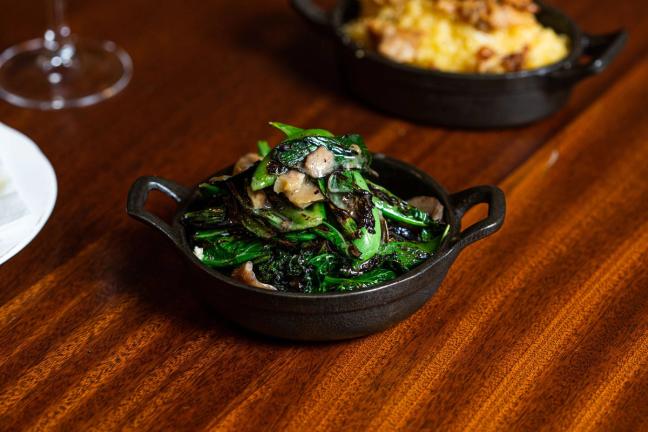
In the restaurants, we cook our Sunday roast over an open charcoal pit. Whole joints of beef, pork and lamb hang on butcher’s hooks over English Oak for a good six hours, and let the meat juices drip into gravy pots beneath. We assume you don’t have an open charcoal pit, but never fear — you can achieve first-rate results in your own kitchen using a heavy cast iron pan or griddle.
Be it a family feast, dinner with friends or a special date night, first thing’s first: get prepared. Take your joint out of the fridge a good hour before cooking and allow it to slowly come to room temperature and relax. This will help build a fabulous caramelisation to the meat. Trust us: the additional time investment will bear fruit and deliver the most pleasing results.
Once you’re in the swing of things, preheat your oven to 220°C fan assisted (240°C if not) with a roasting tray inside on the top shelf ready for your roasting joint and another for all your trimmings. Once heated it’ll be about 30 short minutes before you’re sat devouring your Roast.
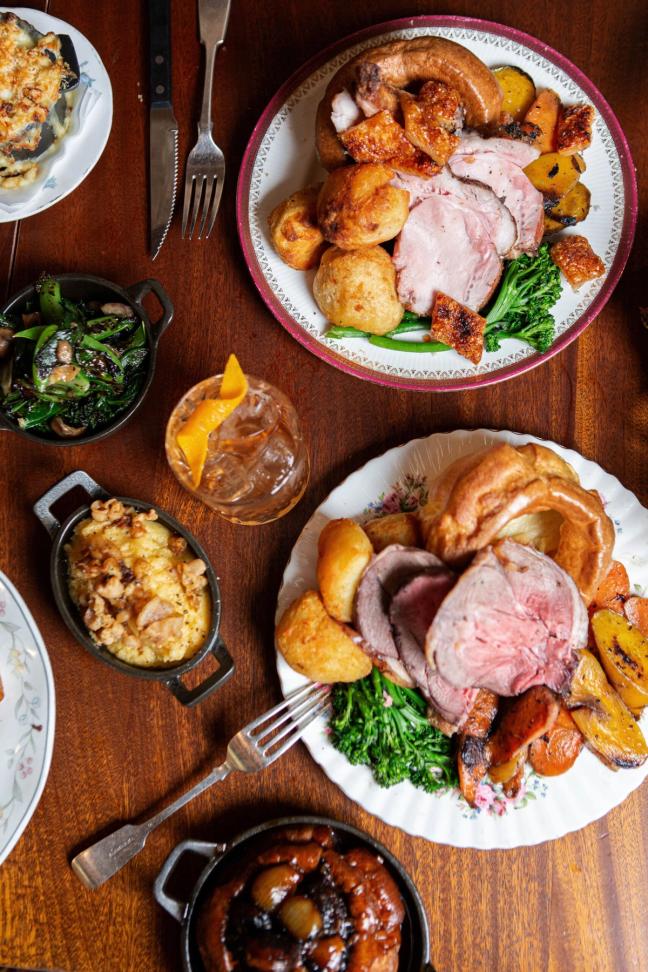
In the restaurants we serve whole rumps of beef which we recommend cooking to medium-rare or medium as it is leaner with less fat and very tender. We wouldn’t recommend anything above medium as it has less fat in it to withstand the extra cook and keep it juicy. Other great cuts for a roast are roast bib of beef, which has a little more fat to it for those who like that sort of thing. Beef is very personal, however. So, for those who prefer their meat differently (and who are we to argue), we’ve included additional cooking times to suit all preferences.
Talk of cooking beef prompts the age-old question: how do you know if it’s still pink inside? Well, you can prod the meat to check if it’s cooked (like our chefs) but this does take a certain level of experience and Jedi mastery. Others use a probe to get all scientific checking internal temperatures. Alternatively, if you’re like me (not a chef!), slice a nick in the middle and take a sneak peek. You’ll be slicing your joint to serve so no one will be any wiser! We won’t tell if you don’t.,
Start by seasoning your joint generously all around with your Maldon sea salt using your best salt-bae impersonation. Be liberal here: a good coating will help build a great crust to your beef. Place a large cast-iron pan or griddle on your hob over the highest heat available. With the pan or griddle smoking hot, put your joint on the fat side down and listen to the sear. There’s no need for any oil or butter. Just trust that the heat from the pan and salt will do their job, and there’ll be no dreaded sticking. Sear for a minute on each side to build a nice caramelisation all around with no raw meat visible. Now it’s time for it to go into the oven on the bottom shelf to finish off as follows:
- Rare — 10 minutes
- Medium Rare — 13 minutes
- Medium — 15 minutes
- Medium Well — 17 minutes
- Well Done — 20 minutes.
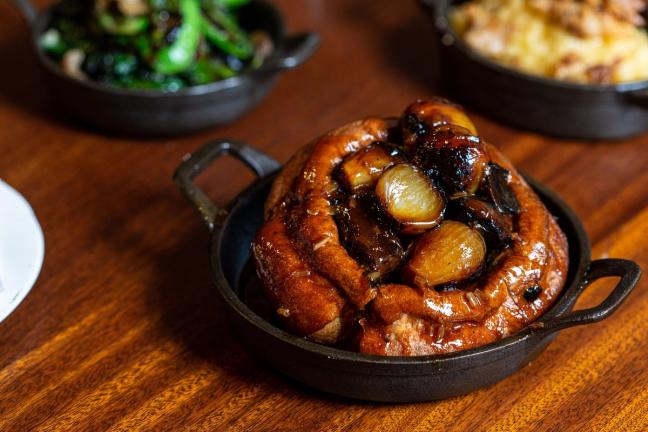
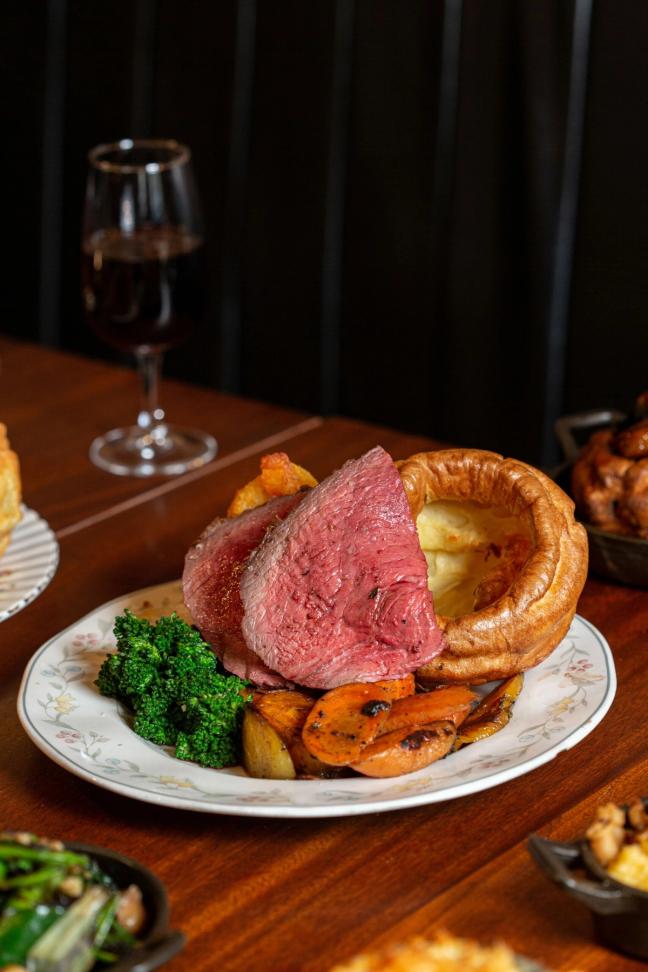
No Sunday lunch is complete, however, without a proper eye-opener. If you’re after a morning pick-me-up or cooking the family roast solo, one of our signature ‘Beefy Mary’s will surely set you off on the right path. And more than two may have implications for your lunch.
We think it’s safe to say that bloody mary recipes are as personal to one’s taste as they get. (We add a little Beef Jus for that Blacklock Sunday Roast touch.) Our favourite formula, however:
- A healthy slug of vodka — depending on your joie de vivre or the extent of your hangover.
- Half a glug of Worcestershire sauce,
- Some tomato juice and/or leftover passata (if you’ve got some),
- Then the beef jus, pinch of sugar, celery salt, black pepper, lemon juice and Tabasco to taste.
- Add all the ingredients together and stir well over ice.
- Strain into a chilled tall glass with a stick of celery for that vegetable crunch (and a nod to health).
Read next:

Become a Gentleman’s Journal Member?
Like the Gentleman’s Journal? Why not join the Clubhouse, a special kind of private club where members receive offers and experiences from hand-picked, premium brands. You will also receive invites to exclusive events, the quarterly print magazine delivered directly to your door and your own membership card.


